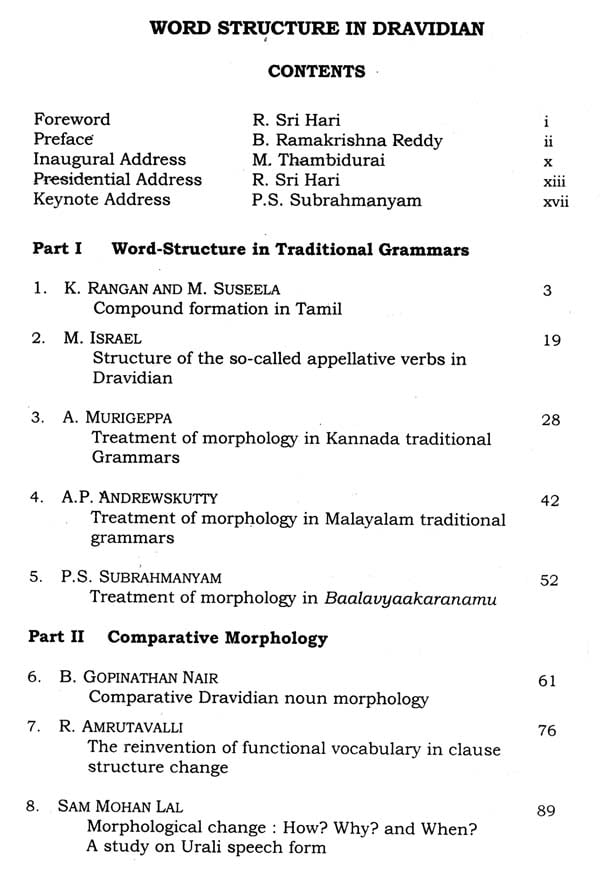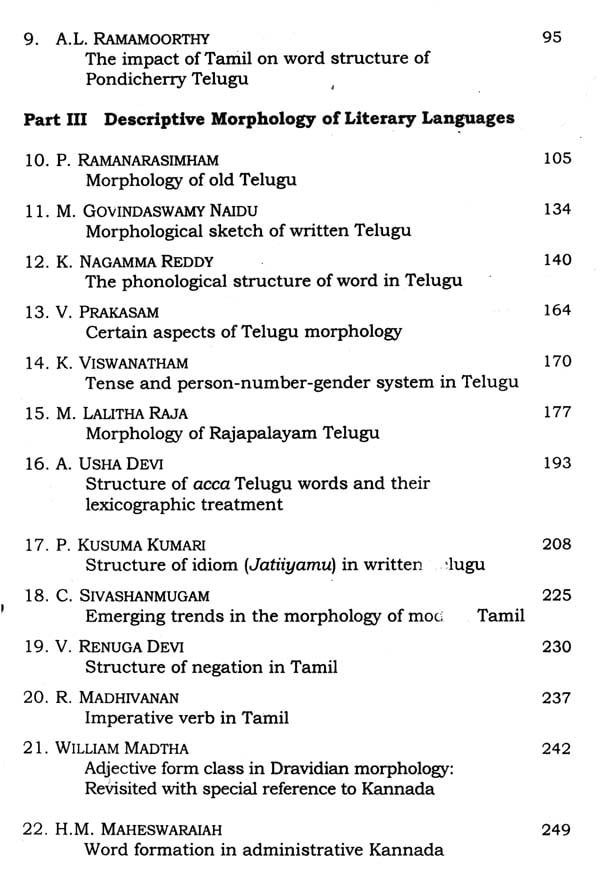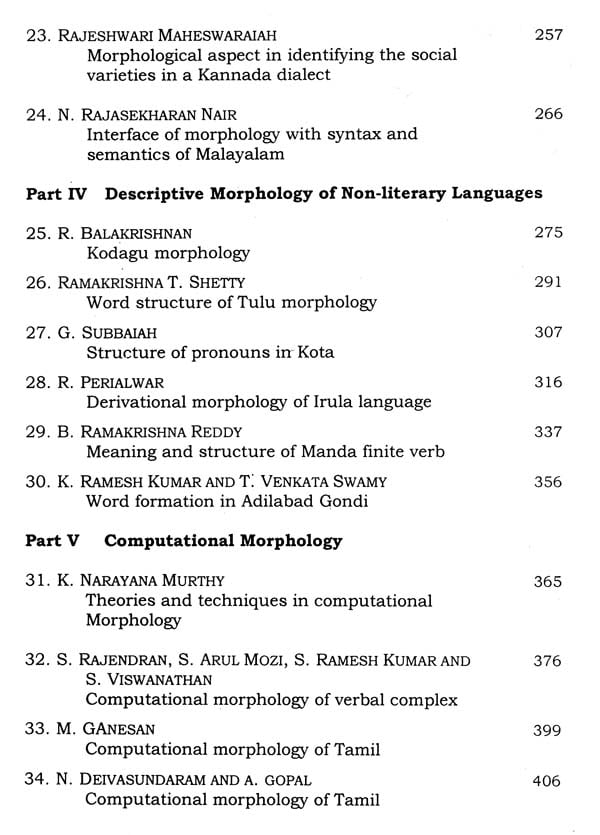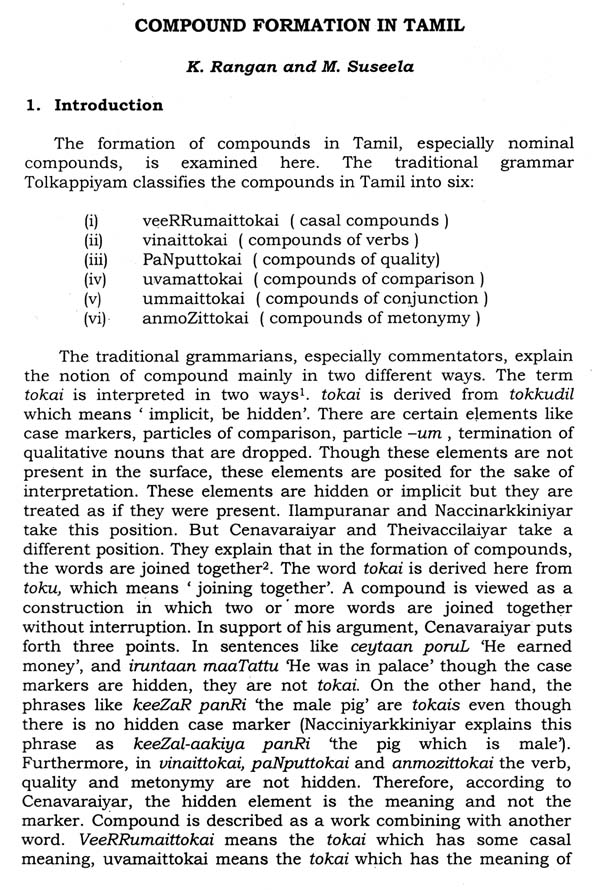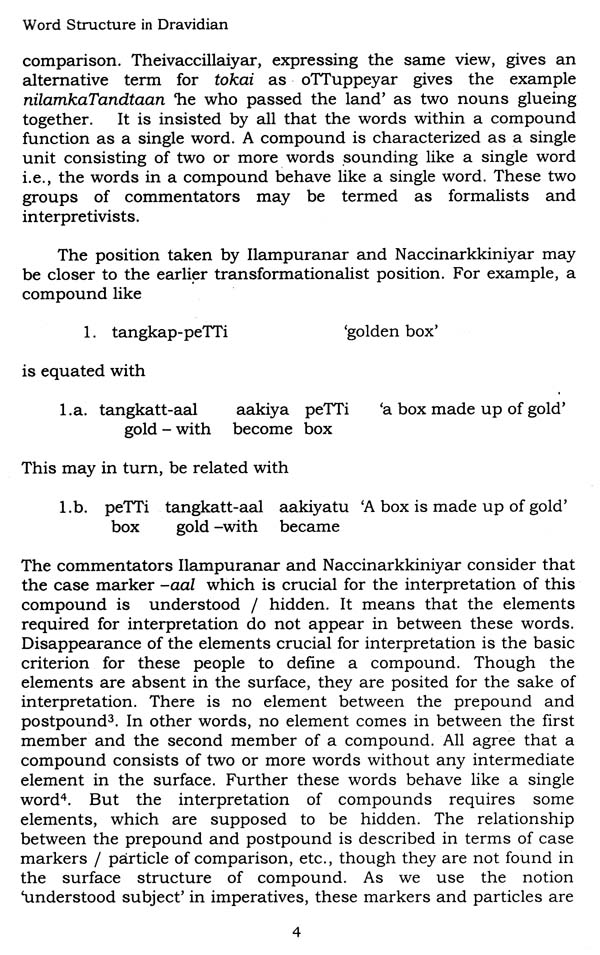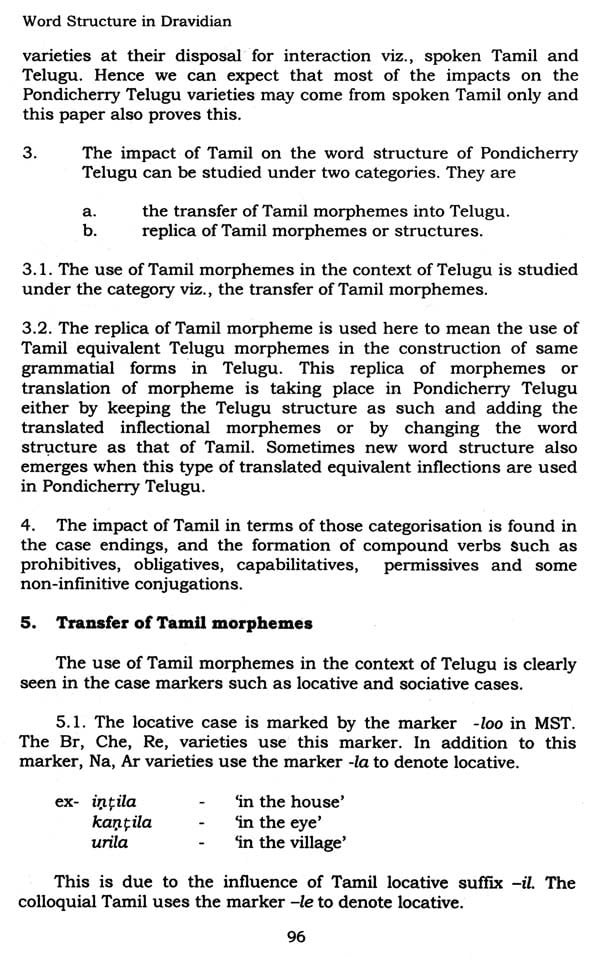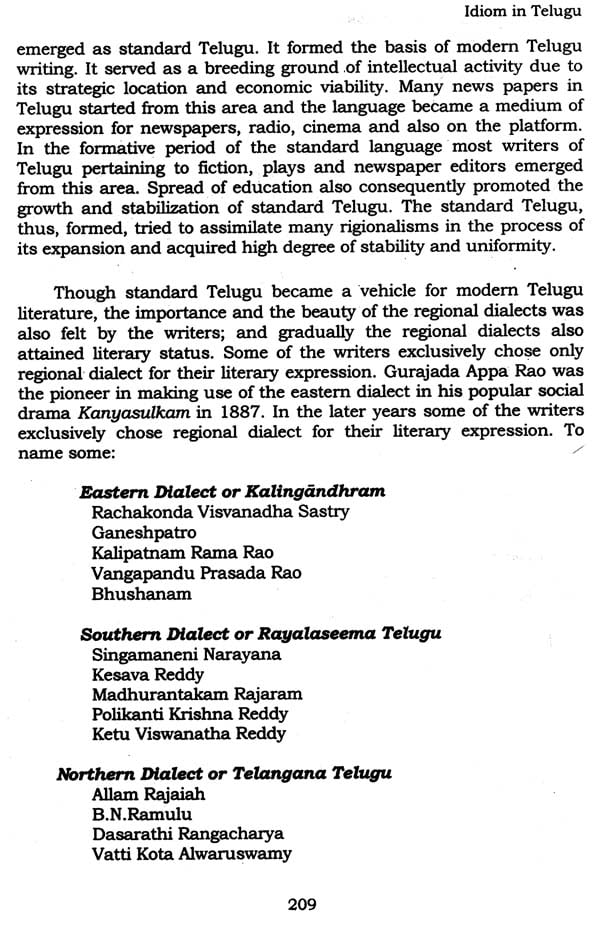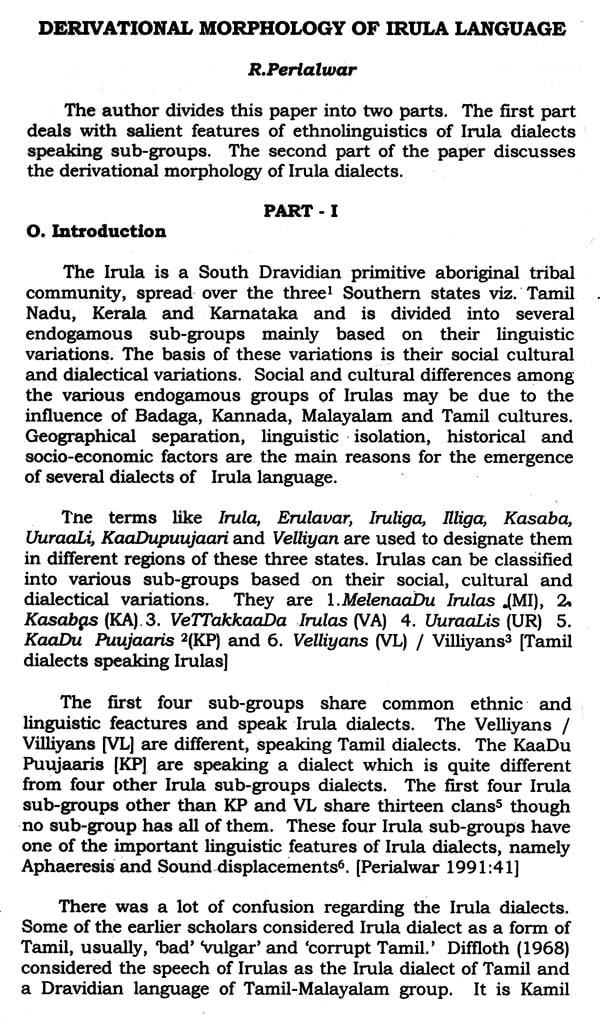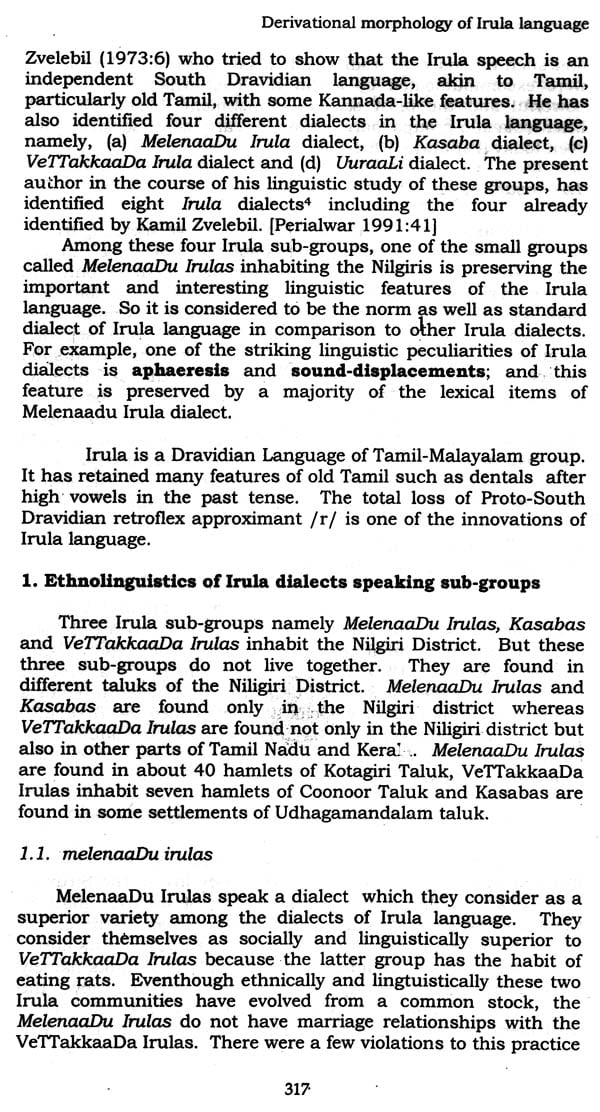
Word Structure In Dravidian
Book Specification
| Item Code: | NAX290 |
| Author: | B. Ramakrishna Reddy |
| Publisher: | Dravidian University Campus |
| Language: | English |
| Edition: | 2003 |
| Pages: | 469 |
| Cover: | PAPERBACK |
| Other Details | 9.50 X 6.50 inch |
| Weight | 720 gm |
Book Description
Word plays a very important role in cognition, analysis, description and inferring theoretical postulates regarding the nature of human language. The central position of word in linguistic analysis is amply attested by both the Indian and Western traditional grammarians of Sanskrit, Prakrits, Tamil, Greek and Latin. Word is the most basic unit of language analysis as it is in interaction with sound (phonetics and phonology) on the one hand, and with sentence (syntax) and meaning (semantics) on the other. It is the anchor for structure and meaning of language. In agglutinative-cum-inflectional systems like the , Dravidian languages, the information carried out in syntax of word order-based languages (like English, Chinese etc.) is encapsulated in morphology. Thus the word-structure in Dravidian becomes more crucial for understanding the form and function of these languages. The contemporary morphological theories are mainly (if not exclusively) based on the structural facts of European languages. The investigation non-Indo-European languages (like the Dravidian) might provide some challenges to the mainstream thinking by bringing to light the nuances of word-structure and thereby pave the way for a fresh look at the existing modes and models of hypothesising.
With these twin goals of analysis-cum-description of morphological structure, and evaluating the modern methods of conducting morphological research on Dravidian, a three-day National Seminar was conducted by the Dravidian University at Kuppam during 26-28 November 2001. An academic note under call for papers was sent to the invited scholars highlighting the following topics in morphology, expecting contributions in the area of individual researcher's specialization :
• Morphology in Traditional Dravidian Grammars - Western and the Indian
• Paninian Model as reflected in the Traditional Dravidian Grammars
• Structuralist Descriptive Morphology
• Generative Models of Morphology : (i) Lexical Morphology; (ii) Prosodic Morphology; (iii) Amorphous Morphology; (iv) Allomorphy and others
• Word Formation : (i) Compounding; (ii) Derivation; (iii) Structure of Complex Words (iv) Echo words, Reduplication, Binomials, etc.
• Inflectional Morphology : (i) Noun; (ii) Verb; (iii) Adjective; (iv) Particles, Connectives, etc.
• Grammatical Relations, Argument Structure and Morphology
• Sandhi or Morphophonological Operations
• Interfaces of Morphology with other levels of linguistic analysis - Phonology, Syntax, Semantics, Pragmatics and Lexicon
• Historical - Comparative and Diachronic Morphology
• Morphology in Language Acquisition and in Disordered Communication
• Computational Morphology
• Role of Morphology in Applied Linguistics
• Morphological Sketch of Individual Languages - Literary and Non-literary
• Typological Morphology: Dravidian vs. Austro-Asiatic, Indo-Aryan, Tibeto-Burman, etc.
• Any other Topic relevant to the Theme of the Seminar.
About forty-five scholars from different parts of the country belonging to Universities and Research Institutions presented their research papers and participated in the enlightening discussions that followed. There was an intensive exchange of ideas among the participants, which have helped them in revising their contributions for publication in the present volume. Professor P.S. Subrahmanyam delivered the Keynote address highlighting the importance of Dravidian morphology for theoretical linguistics in general, and for Dravidian linguistics in particular. He has specified the existing work and future directions for research in Dravidian linguistics. While delivering his Presidential address Professor R. Sri Hari, Vice-Chancellor, Dravidian University concentrated on contributions of the Ancient Indian Sanskrit grammarians to the theory of language focusing on the works of Panini, Patanjali and others. The impact of their original ideas on modern theoretical linguistics was well elucidated. Dr. M. Thambidurai, the then Education Minister, Government of Tamilnadu inaugurated the Seminar and pointed out the outstanding characteristics of Dravidian culture and languages, and their spread throughout South-Asia and beyond. The importance of Dravidology to Indology was well brought out in the address, by detailing the ancient contact of Dravidian with other linguistic groups, especially with Indo-Aryan represented by Sanskrit.
The forty research articles read at the Seminar are classified into six parts basing on the focus of each contribution. Part I is concerned with Treatment of word-structure in traditional Dravidian grammars'. 'Compound formation in Tamil' by K. Rangan and M. Suseela deals with the classification, analysis and description of nominal compounds in the models postulated by Tolkappiyam and other ancient Tamil grammars and their theoretical postulates. M. Israel's paper on Appellative verbs in Dravidian' examines the proposals of the 19th century European grammarians on the topic and shows their applicability to modern Tamil, Kui, Kuvi, Kurukh and other languages. The traditional grammars of Kannada, Malayalam and Telugu came more under the impact of Paninian theory of language than that of Tamil tradition, though they were sensitive to discern the native structures unique to these languages. A. Murigappa surveys the traditional grammatical works of Kannada with focus on their description of morphology. He provides ample illustrations to support his interpretation of the earlier works. Morphology of Malayalam in traditional grammars by A.P. Andrewskutty evaluates the contributions of the native scholars of Paninian school as well as the European scholars. The central place of morphology in linguistic analysis is well documented in these grammars. P.S. Subrahmanyam's 'Treatment of morphology in BaalavyaakaraNam' looks at the merits and demerits of the grammar. Though the grammarian Chinnaya Sun adapted the Paninian method and also the earlier native tradition, he has postulated his own original interpretation of the facts of Telugu. The imposition of synthetic Sanskrit models on an agglutinating Telugu and its pitfalls are highlighted.
The Study of languages on their various aspects particularly with regard to Dravidian languages has been given due importance in the curriculum of the Dravidian University. Any language whether well-developed or undeveloped is the source of human life and power of the respective speech community. There are many things we do not know about the nature of human languages. As a discipline, Linguistics goes very deep into the study of languages on scientific principles and brings to light many significant features of language.
One of the most fundamental units of linguistics is the word. There are thousands of words in a language. These words, whether native or borrowed, are the real wealth of a language. Words and compound words have sound and meaning. A word in a particular language may not be meaningful in another language. Why a particular object is called by that word cannot be explained logically. It is only an association between a word and an object. The language speaking community of that particular language accepts a specific word to identify a particular object. It is nothing but a matter of convention.
The present volume is a collection of Research papers on Word Structure in Dravidian Languages presented in a Seminar conducted by the Dravidian University. These papers discuss many aspects of word structure in Dravidian languages. Word structures in different contexts are explained in the papers presented here. There are papers on literary language, social dialects, problems in respect of teaching a particular language, sample words selected from newspapers to find out the frequency of such words and so on.
Thanks are due to the organisers, of the Seminar and to Dr. B. Ramakrishna Reddy the former Registrar and the Editor of this collection of papers.
Hope the linguists will be benefited by using this volume as a reference book.
**Contents and Sample Pages**
